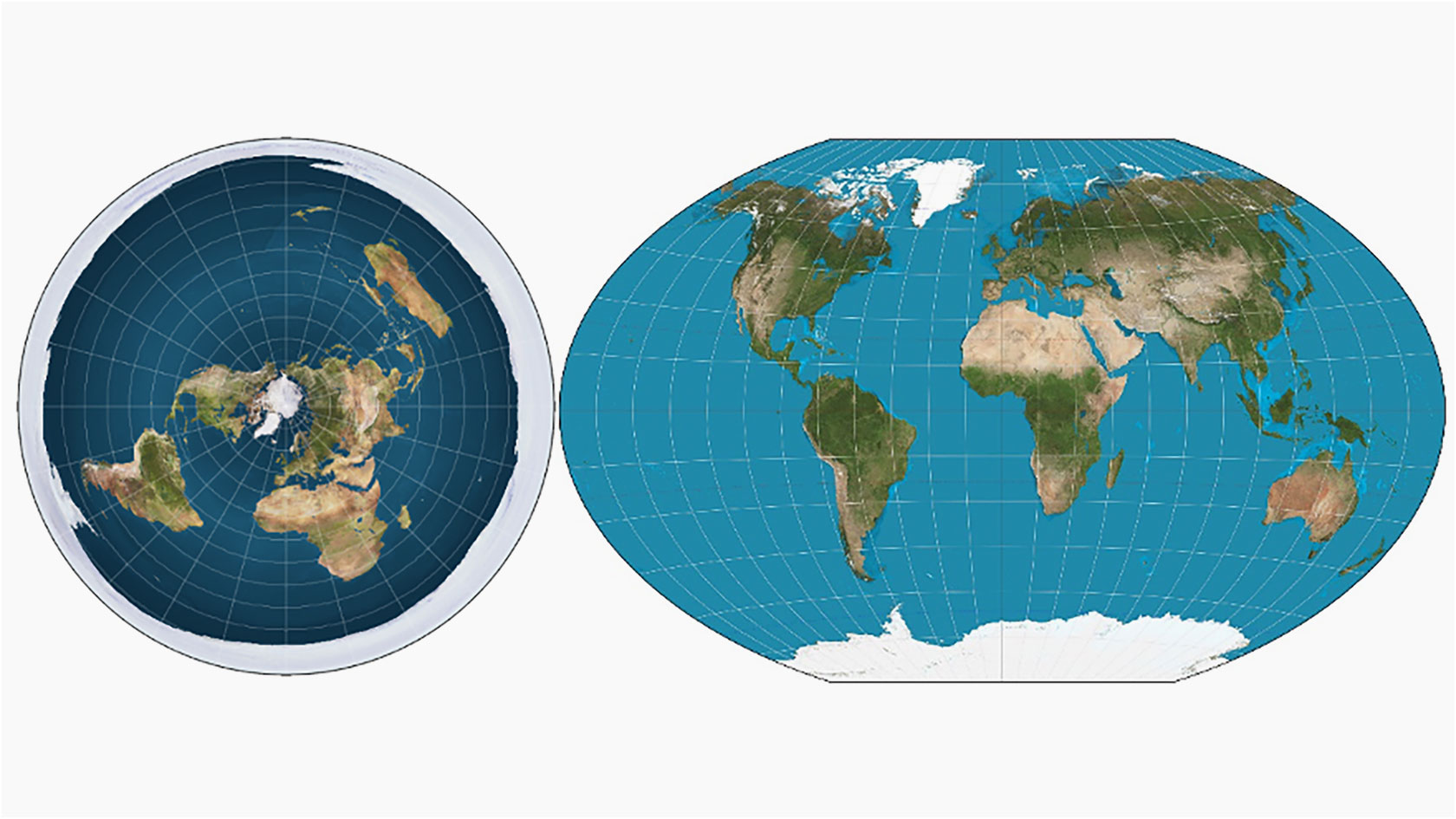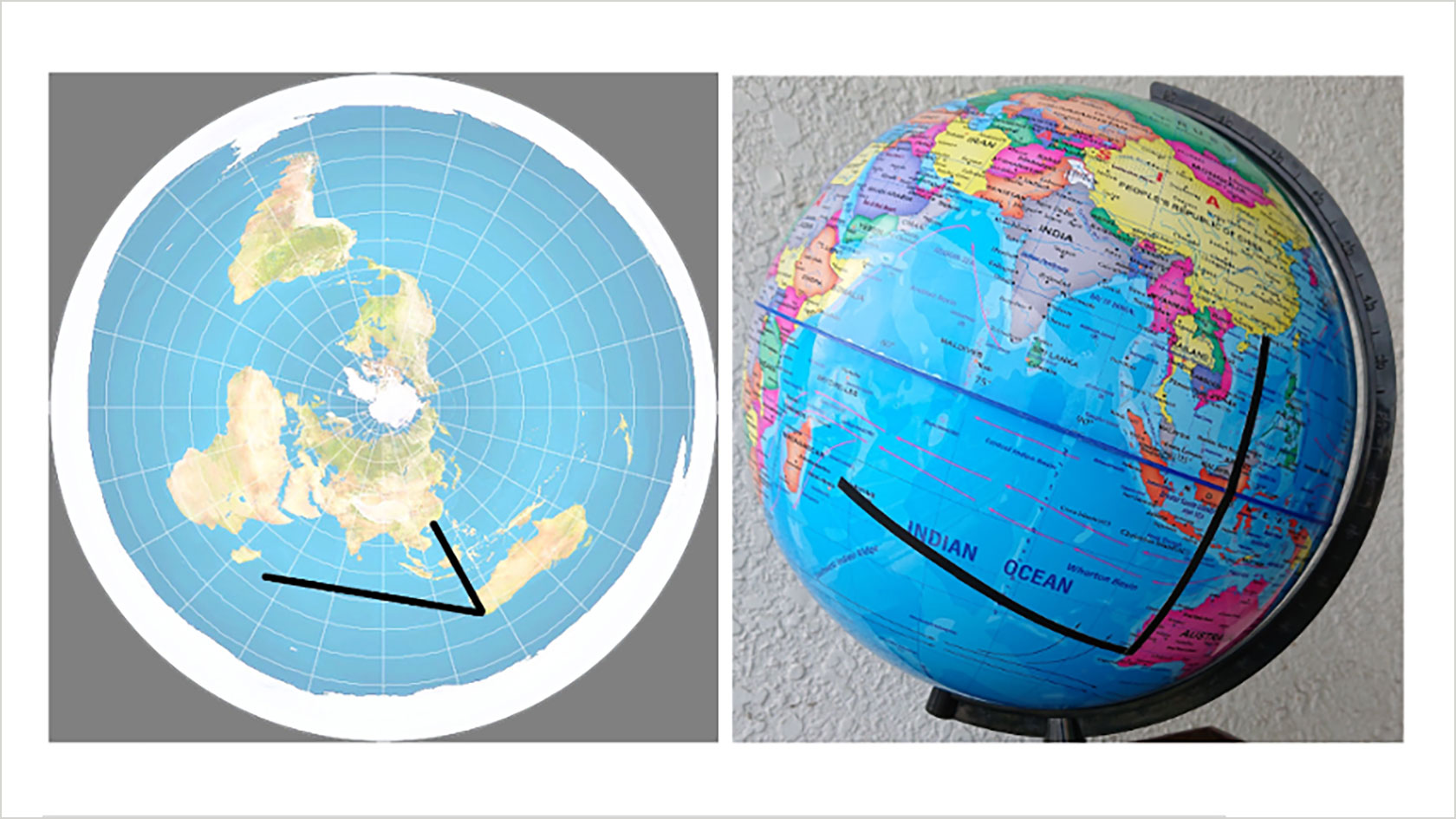Disk or Globe?

Members of the Flat Earth Society believe that the Earth is a disc, with the North Pole at the center and Antarctica stretching around along the edge. Despite this fundamental difference from the established idea of Earth as a sphere, there is agreement on the use of longitude and latitude to indicate geographical coordinates. In the disc model, longitudes are represented as spokes going outwards from the center and latitudes as concentric circles. In the spherical representation, the longitudes connect the south and north poles vertically, while the latitudes extend horizontally around the sphere.
An ideology-free instrument
So how do you answer the question of whether the Earth is a disc or a sphere in an objective and easily comprehensible way? “With statistics,” says Professor Michael Wolf from UZH’s Department of Economics. “Statistics are the ideal method for answering a number of controversial questions. It is a purely mathematical science and does not depend on basic physical assumptions or ideological paradigms.” Michael Wolf and Olivier Ledoit from the Department of Economics, as well as their co-author David Bell, wanted to present an elegant yet simple solution to this question using classical statistical tools.
Integrating arguments from minority theories
“Proponents of the Flat Earth theory rightly argue that a number of theories we consider proven began as minority views,” says Michael Wolf. He also adds that simply dismissing the Flat Earth theory as a conspiracy theory is a weak objection as a – albeit small – number of so-called conspiracy theories turned out to be true over time. And finally, although the argument that naval explorations and expeditions to Antarctica and outer space confirm the spherical Earth model is a strong one, it is not accessible to the educated layperson, whose everyday knowledge lies elsewhere.
The authors took all these criticisms on board. They developed a model based on publicly available and easily verifiable data that uses relatively simple statistical methods to test the hypothesis of a zero curvature of the Earth’s surface (Flat Earth) vs. a curved Earth surface (Spherical Earth).
Distances and flight durations in north-south vs. east-west direction
City pairs along the north-south axis have the same distances according to the both models; using flight durations between such city pairs (i.e. data that is publicly available and easily verifiable), it is then possible to indisputably determine how the flight duration depends on the distance with the help of a linear regression model. However, the situation is different for pairs of cities along the east-west axis, where the two models imply different distances. The further from the North Pole, the greater the difference in distance according to the Flat Earth model relative to the Spherical Earth model. Using flight times between such city pairs, it is then possible to determine which of the two models corresponds better to reality.
The approach can easily be illustrated using two specific flight connections. If you fly north from Perth, Australia, for about seven hours, you will land in Hong Kong. A westbound flight of the same length will take passengers to Mauritius. However, if the Earth were a disc, the flight time for the route from Perth to Mauritius would have to be about twice as long as the route from Perth to Hong Kong.
Method confirms Earth’s curvature
“The really amazing thing about this method, however, is that it can be used not only to prove that the Earth isn’t a disc (i.e. that there is a curvature), but also to determine the value of the curvature,” explains Michael Wolf. According to the orthodox Spherical Earth model, the curvature is π/20,000 km; this value is based on complicated physical measurements and must simply be “believed” by laypeople. With the statistical method, however, an estimated value for the curvature can be calculated in an easily comprehensible way, but also a confidence interval that contains the true value with approximate certainty.
The idea here is that different values of curvature imply different distances between city pairs on the east-west axis. Based on flight durations between pairs of cities, the value that best aligns with reality can then be determined with the help of a non-linear regression model. This estimated value is practically identical with the orthodox value π/20,000 km, which is also included in the confidence interval for the true curvature. This confirms the orthodox model in a statistical way.
“It was important for us not to favor a model a priori, but to find a relatively simple method to prove whether the Earth is a disc or not,” says Michael Wolf. “Moreover, it is the first time that the value of the Earth’s curvature could be determined using a method that makes do with high school mathematics knowledge, classical statistical tools and publicly available data.”
